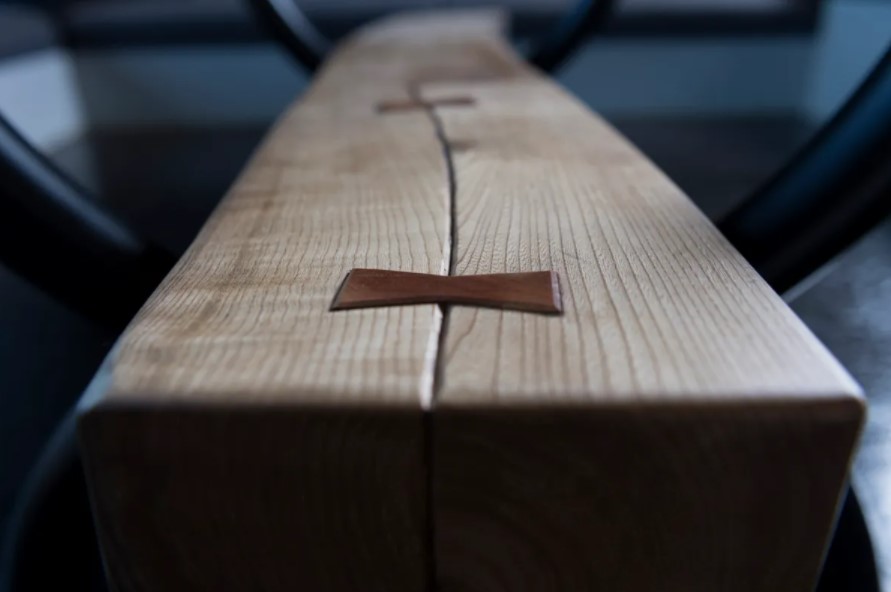Damian “Hippy” Keyte is a local craftsman, metalworker, custom furniture builder, and designer living in the Hanazono area of Niseko.
Damian “Hippy” Keyte has created numerous custom pieces for private collections throughout the area. One of his most recent commissioned projects was for Intuition Niseko, Niseko’s newest luxury onsen estate. He custom built two dining tables for the penthouses as well as a bar and reception counter using repurposed materials.
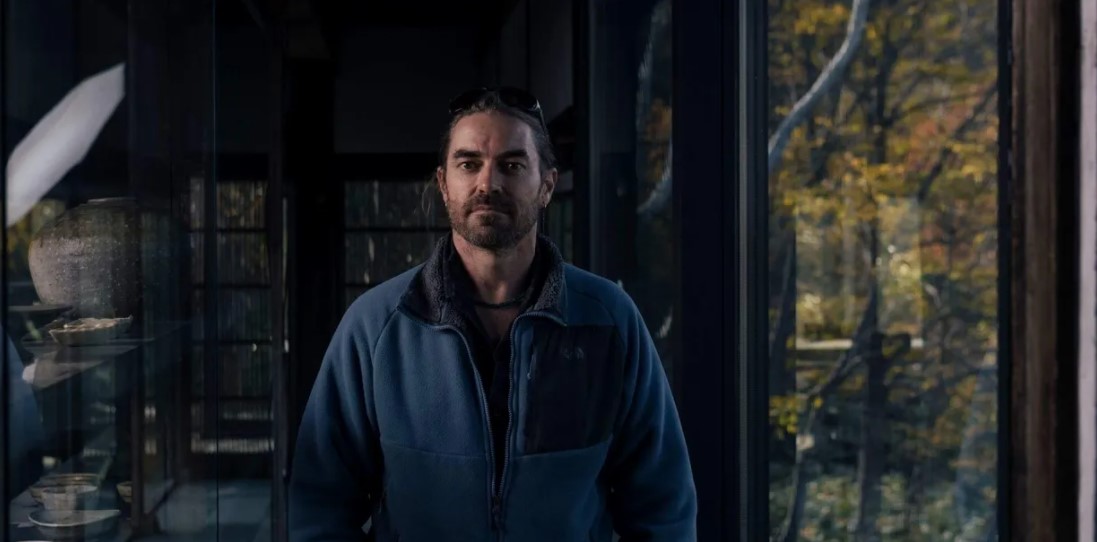
Could you share with us what led you to start Yoshitomo Design?
I have learnt many trades since High school (manufacturing jeweller, builder, plasterer, welder, seaman) and I had always planned to build my own house out here at Hano. I planned to build everything including the furniture, staircases, etc.
My last job before starting Yoshitomo Design was as an Able Seaman (merchant sailor) in the oil & gas industry in Australia, and after nearly ten years in that field the industry was going through a global downturn. I was offered a redundancy, so I took it and moved here full time (during that decade at sea I lived here during my breaks… five weeks on, five off).
I started my own company so I could make the things I wanted, and hoping my clients would like the same.
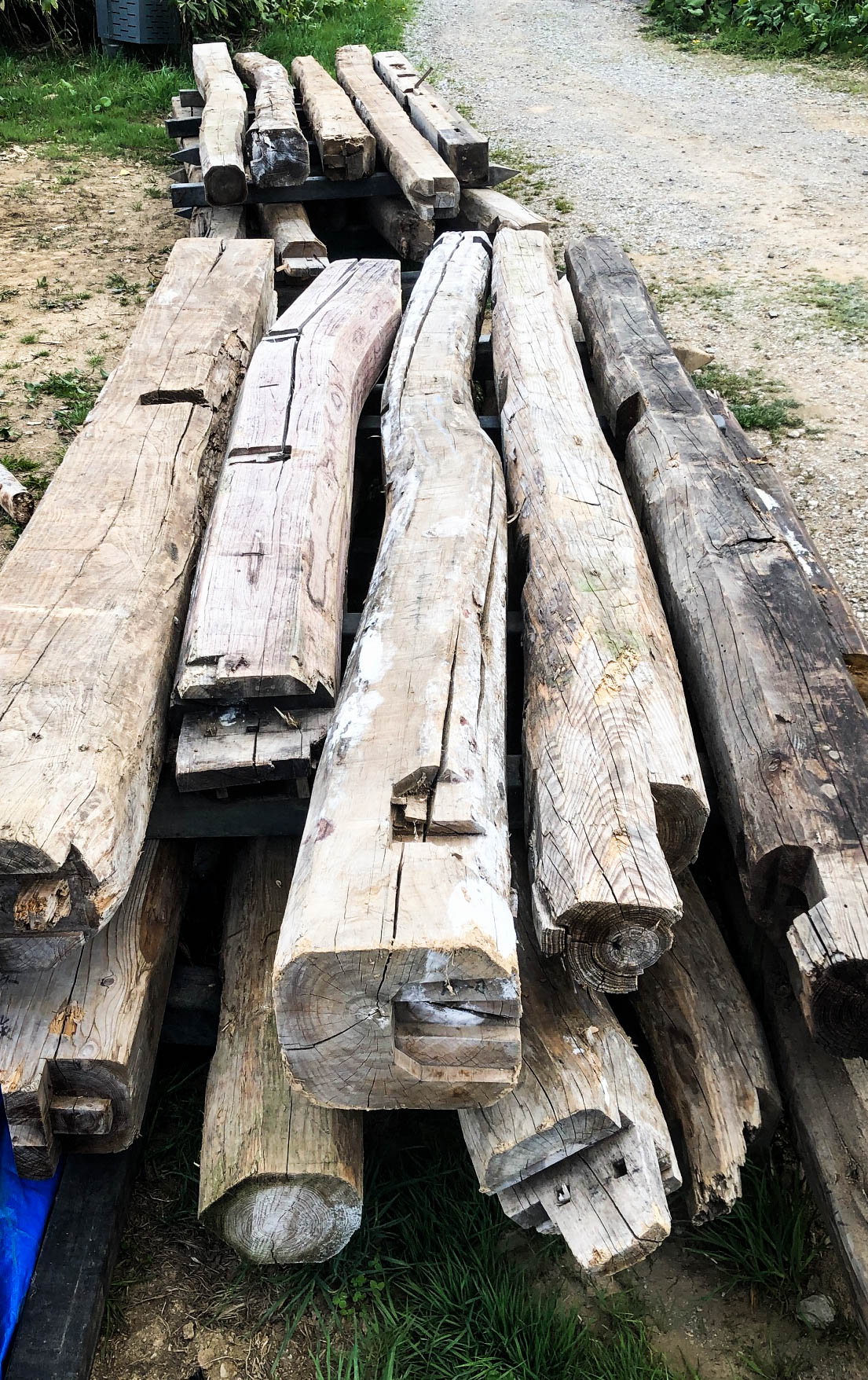
How do you select your materials and are there any specific features that you look for in choosing raw materials?
I love old timber. It’s had a previous life, and as long as it’s not rotten, it can have another life again. Japan has such a long history of using wood, and the quality of reclaimed (salvaged) is fantastic. I also love visiting scrap steel yards…cool industrial objects are great for repurposing.
I started my own company so I could make the things I wanted, and hoping my clients would like the same.
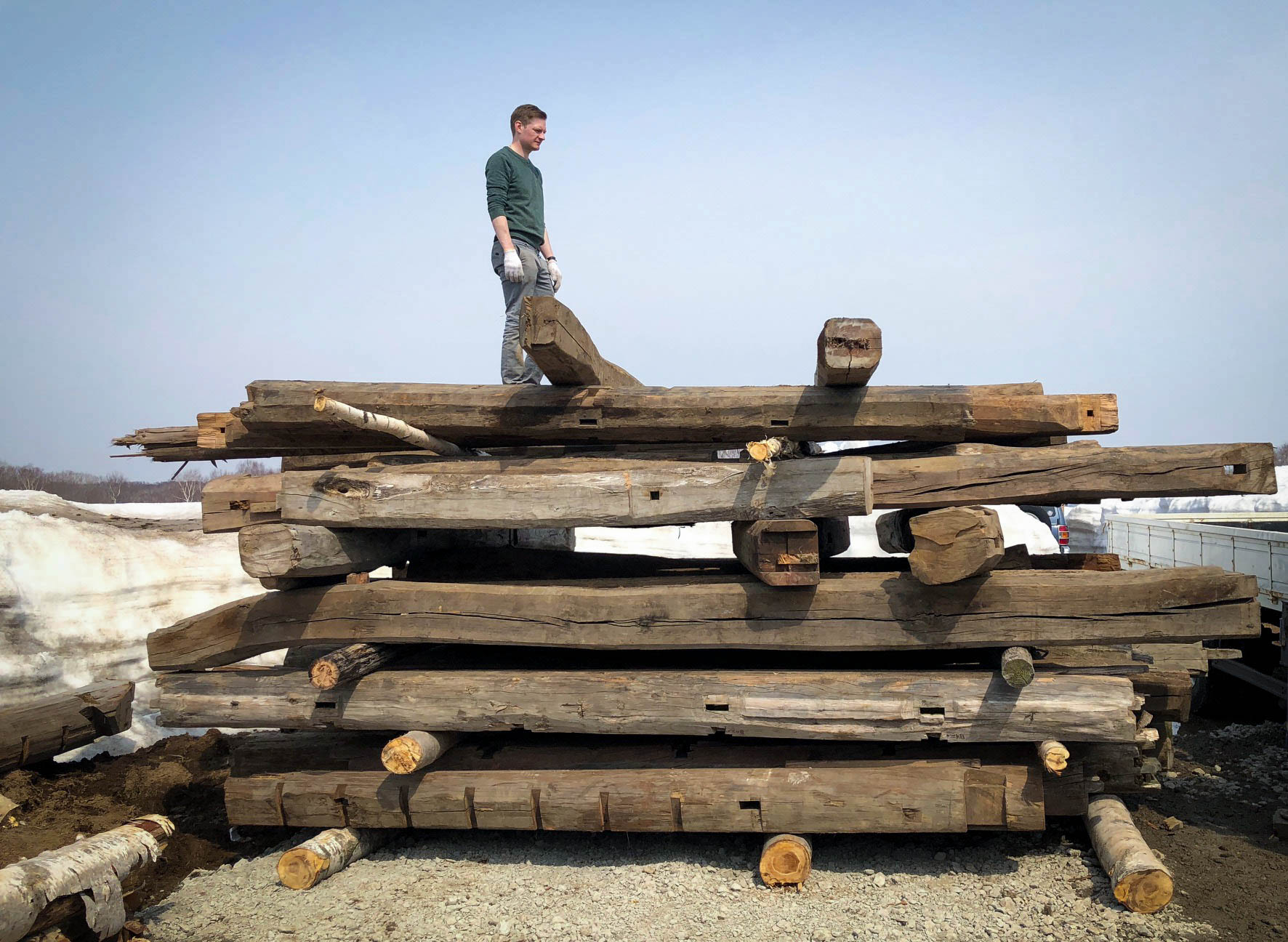
What part of the process of designing excites you the most?
Being able to see what the materials at hand can be reborn as.
Most of my clients have been recommended by previous clients and seem to like what I do. I’m a one-stop shop that can draw up the design, and create it from start to finish.
My clients usually have a starting point (usually a picture from Pinterest), and I go from there, with most cases giving me free reign.
The design process usually takes a lot of ciggies and coffee to be consumed while I just look at the materials and decide what it’s going to be.
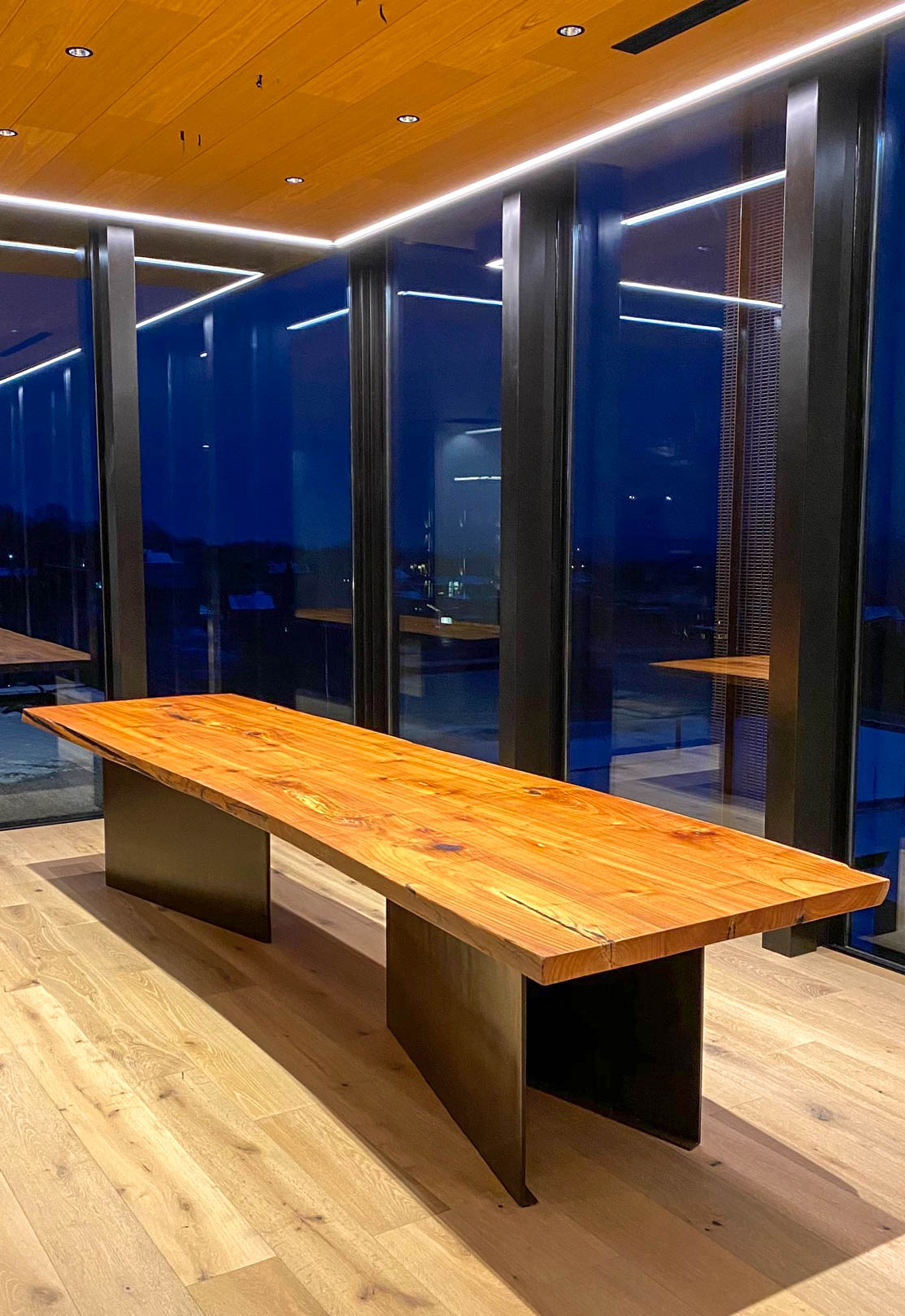
Can you describe the features of several custom pieces for Intuition Niseko ?
and specific Yoshitomo Design touches you made to them?
What materials are used?
There were four pieces commissioned for Intuition: two large penthouse dining tables, a reception desk counter, and bar counter.
All of the pieces had dimensions predetermined by the design team (Zekkei Properties and ALA architect Umezawa had the primary roles, along with the team from TAIGA).
The timber was a selection of reclaimed beams that came from old kominka (traditional Japanese farmhouse). These beams were around 200 years old, and came from Kumamoto in Kyushu.
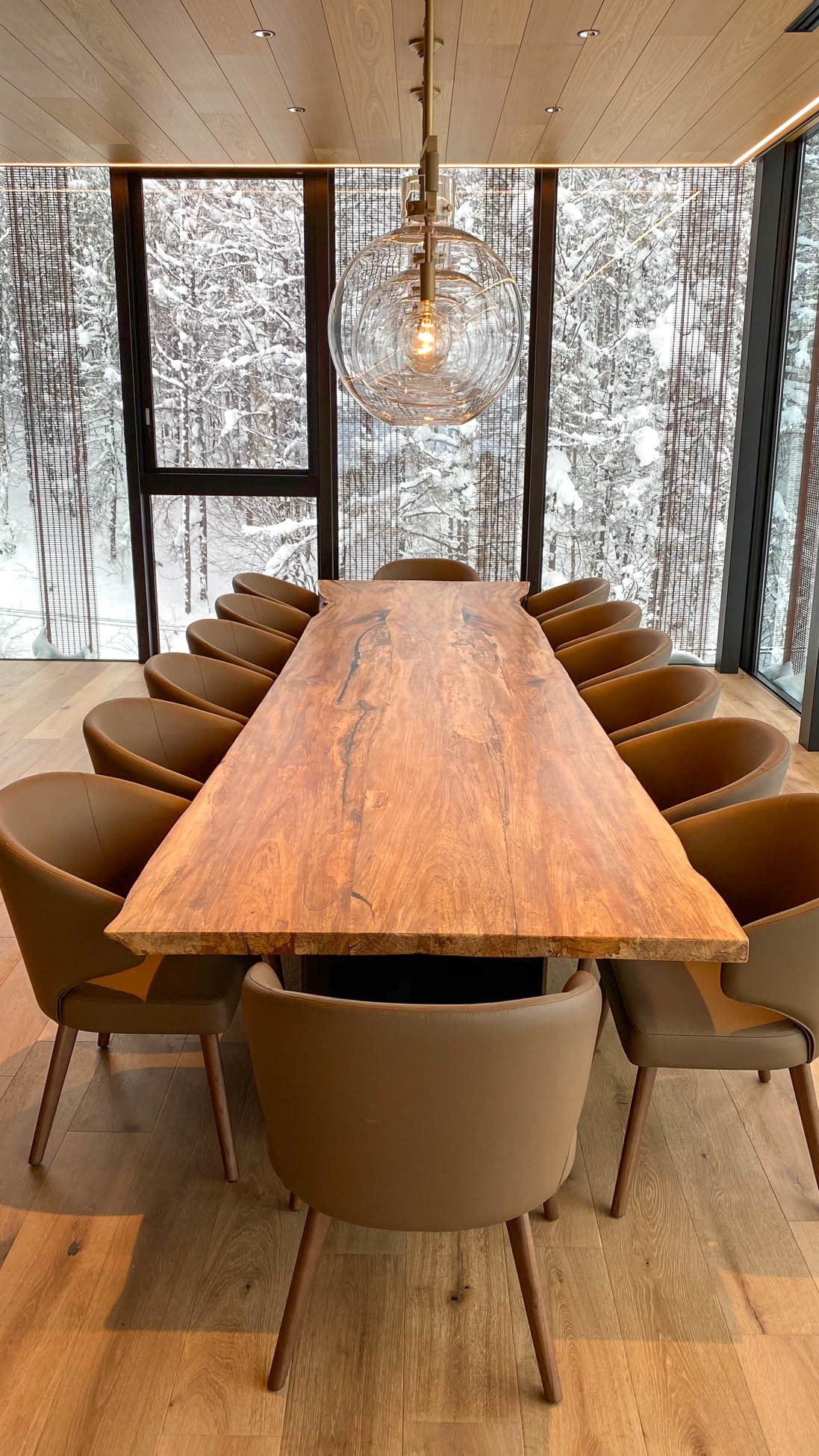
What did you keep in mind whilst creating the pieces for Intuition Niseko?
Were there overarching themes or principles that guided your creative direction?
The main objective was to create unique pieces.
Every piece of wood is unique and has its own character.
The beams I used for each pieced were sliced into slabs that were then rejoined following the natural curve of the original shape the carpenters made centuries before (instead of straight joins of modern dimension timber).
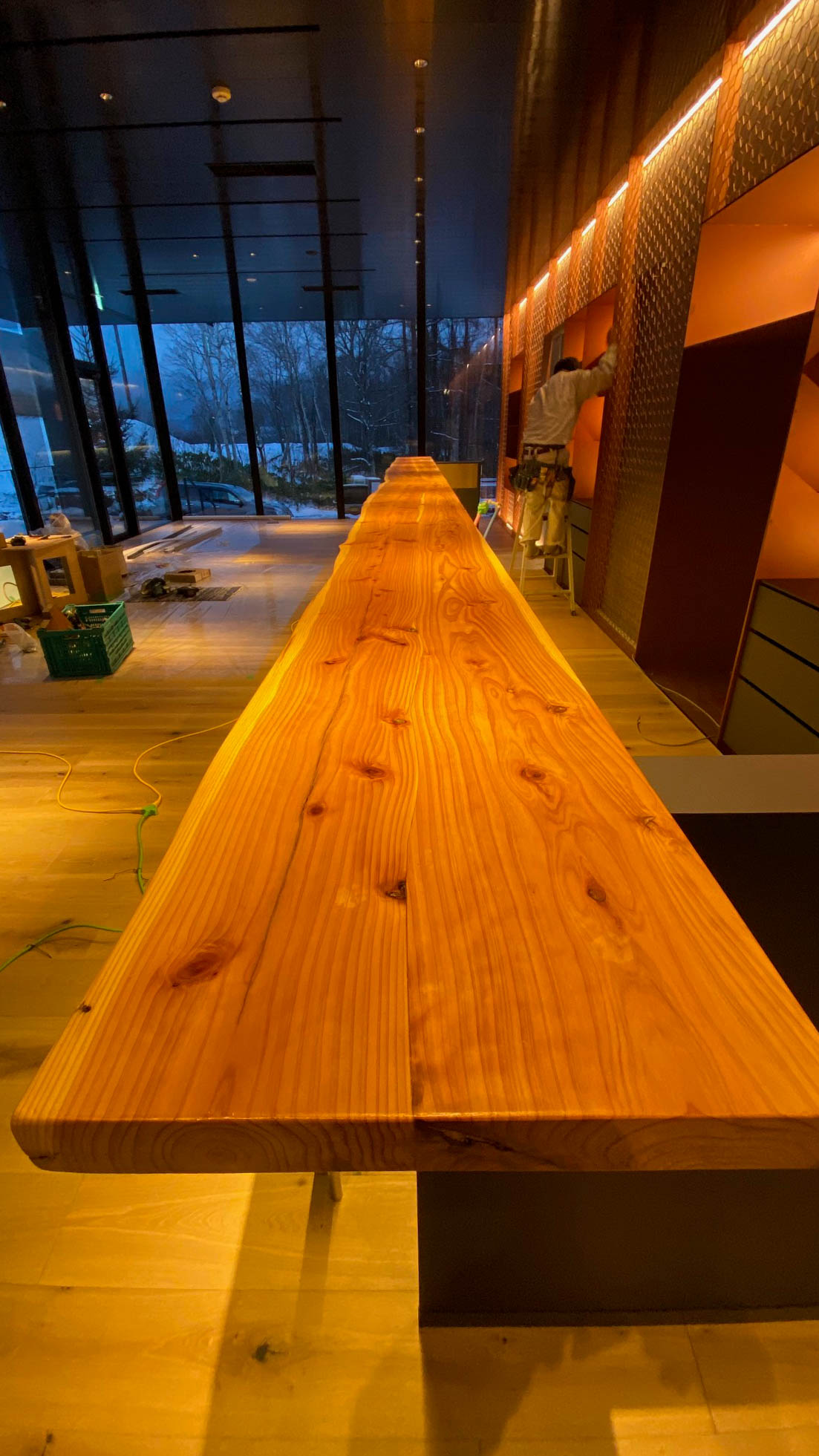
What is your workspace like and can you share a little about your design process?
My workshop has expanded over the past four years. It started off in a double garage where the sizes of the pieces of furniture were limited. I now have a much larger workshop for timber that can make dining tables up to 6m long.
I also have a separate workshop for welding and other metal fabrication.
Working with reclaimed timbers is very labour intensive:
– First the beams need to have any nails or bolts removed.
– Then it’s usually pressure washed to remove dirt and debris.
– Once they’ve dried, they need to be sliced into a manageable thickness (usually somewhere between 50-100mm depending on the project….beams usually start around 300mm thick).
– After being slabbed, the timber is stored in a shed, sorted by species and length, until the workshop becomes available for the next stage of production in the main workshop.
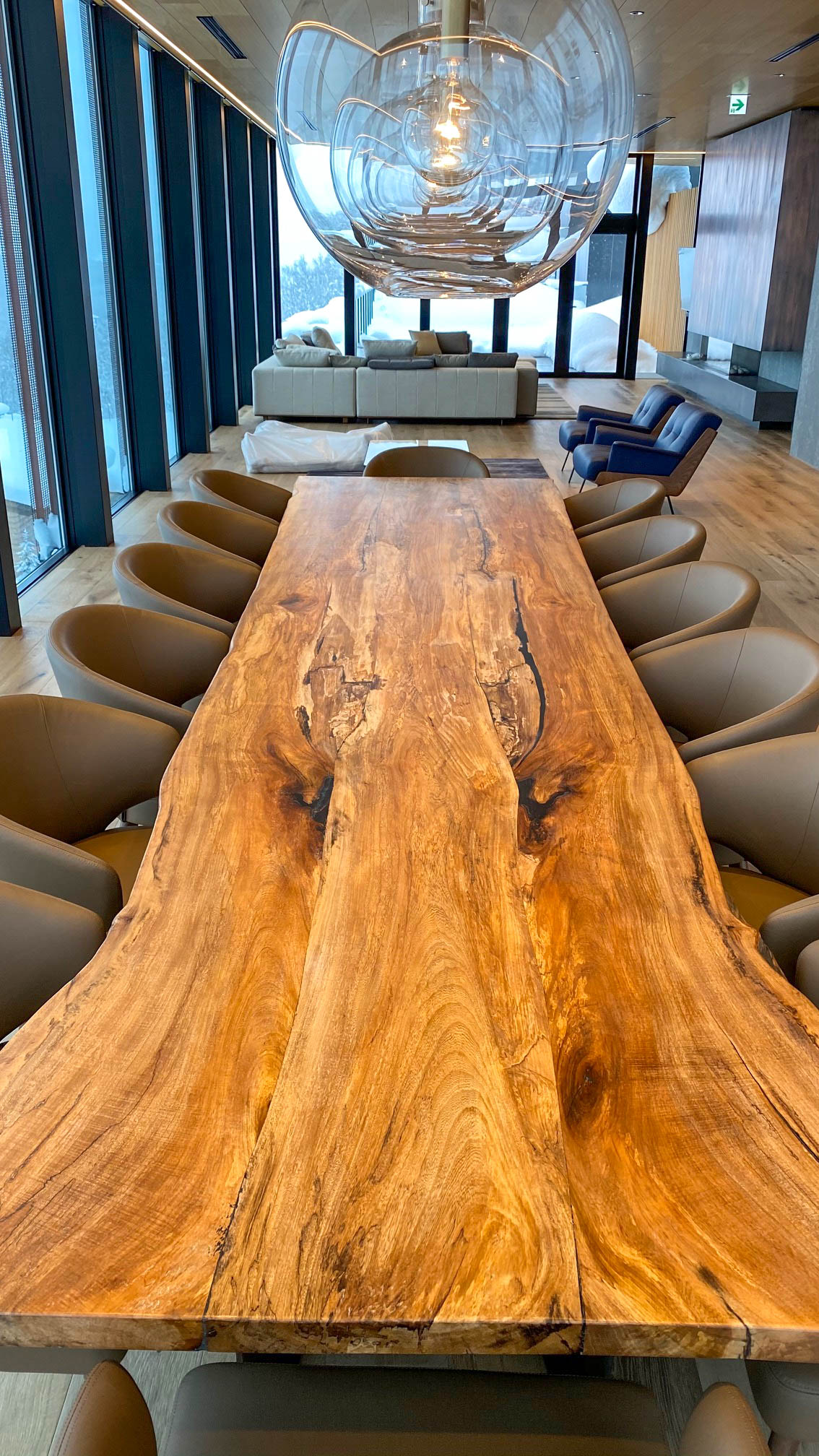
What makes you unique from other furniture makers and craftsmen?
I guess I’m a “Jack of all trades”. I do everything from start to finish. Not just the wood, but the steel fabrication, paint coatings, and of course, the installation.
Having come from an artistic background (manufacturing jeweller), I have always been able to see the possibility of the raw materials on hand, and the manufacturing process needed to achieve the final result.
Being able to see three steps ahead, and the manufacturing challenges that maybe involved, I think from both a designer and creator’s perspective.
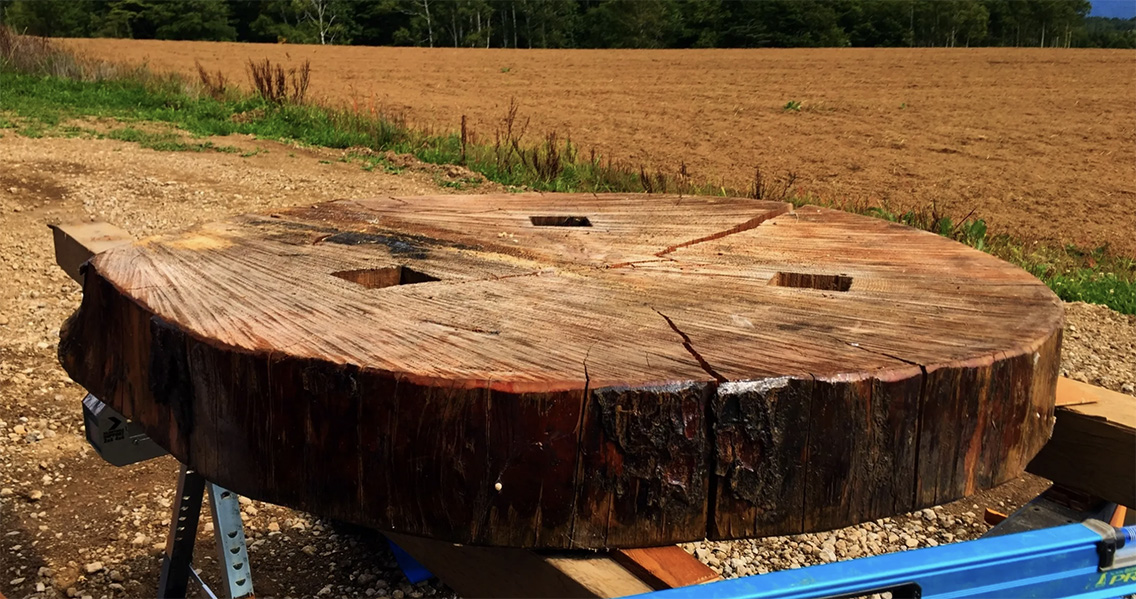
Where can we see your designs on display and how does one get in touch with you for custom work?
Most of my works are commissioned and held in private collections.
I document everything I make and usually post the final installation on my company Instagram and Facebook pages.
I also have a shared gallery with my friend and business partner in Hirafu at the main intersection (next to Niseko Pizza).
AJ Gallery Niseko is two custom made shipping containers I designed and fitted out using various reclaimed materials from in around Kutchan. It features fine art prints by Aaron Jamieson, and constantly change range of some of my smaller pieces of work from standing lamps, to timber cheese boards.
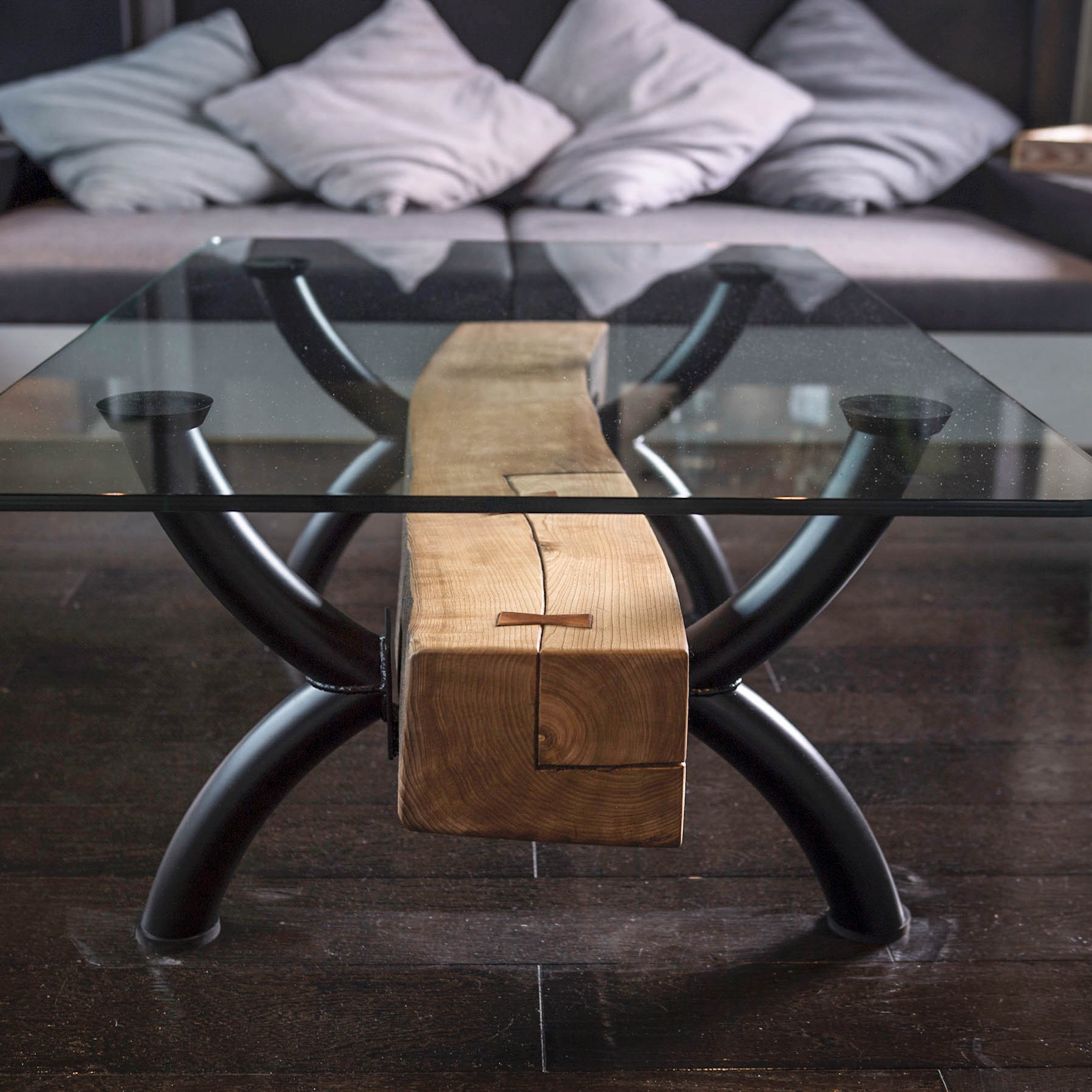
To commission a unique and custom piece from Yoshitomo Design, contact Damian directly at: damian@yoshitomodesign.com.

 English
English

